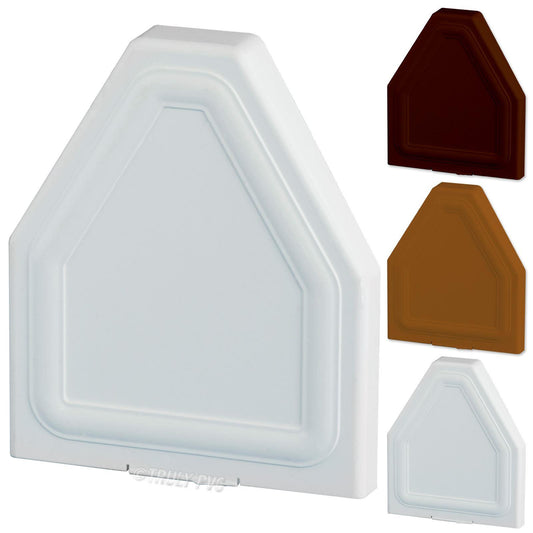Bar End Caps
Range of plastic and aluminium caps for protecting the ends of conservatory and lean-to glazing bars.
Options available
Conservatory roof panels slipping?
We're here with Tony to answer some of the top questions we're asked about conservatory roof leaks and drafts.
-
End-Fix End Cap Replacement Kit
Regular price £3.96Regular priceUnit price per -
Conservatory Glazing Bar End Cap
Regular price £1.44Regular priceUnit price per -
Wendland RS3480 Glazing Bar End Cap
Regular price From £1.57Regular priceUnit price per -
Ultraframe CCTA001 Glazing Bar End Cap
Regular price From £3.23Regular priceUnit price per -
Heavy Duty Self-Supporting Bar End Cap
Regular price From £3.50Regular priceUnit price per -
Ultralite 500 Glazing Bar End Caps
Regular price From £4.00Regular priceUnit price per -
Sunwood Snap-Tight 25GB Glazing Bar End Cap
Regular price £2.40Regular priceUnit price per -
Sunwood Screw-Down Glazing Main Bar End Cap
Regular price From £4.23Regular priceUnit price per -
Eurocell CRS-8201 Glazing Bar End Cap
Regular price From £3.16Regular priceUnit price per -
Ultraframe CCG001 Georgian Glazing Bar End Cap
Regular price £6.16Regular priceUnit price per -
Ultraframe Glazing Support Clip
Regular price £2.50Regular priceUnit price per -
End-Fix Glazing Bar Retaining Plate
Regular price £2.27Regular priceUnit price per -
Side-Fix End Cap Replacement Kit
Regular price £5.18Regular priceUnit price per -
Side-Fix Glazing Bar Retaining Plate
Regular price £4.54Regular priceUnit price per -
Sunwood Screw-Down Glazing Hip Bar End Cap
Regular price From £6.30Regular priceUnit price per -
Wendland Glazing Bar Starter End Cap (Pair)
Regular price From £2.47Regular priceUnit price per
FAQ
What causes a conservatory roof to slip?
This could be due to structural issues, poor installation, or wear and tear over time. The use of silicon to seal the panels is also a cause for leaky roofs
Can weather conditions cause a conservatory roof to slip?
Yes, extreme weather conditions, such as heavy rain or snow, can put stress on the roof, leading to slipping. If silicon is used for the sealing the panels in place, high temperatures can cause the panels to expand and contract causing the panels to lose their seal.
Is a slipping conservatory roof a sign of a more serious problem?
It might indicate underlying issues with the roof's framing, the materials used on the panels, or even movement in the building's foundation.
How can I prevent my conservatory roof from slipping?
Regular maintenance, proper installation, and ensuring the roof structure is sound can help prevent slipping.
Is it safe to use a conservatory if the roof is slipping?
It’s best to avoid using the conservatory until the issue is resolved, as a slipping roof can be a safety risk.
How can I fix a slipping conservatory roof?
The best approach is to consult a professional to inspect and repair any structural or installation issues.
Can I use silicon to seal my conservatory roof panel?
No, using silicon is not advised.
Conservatory roofs are exposed to a wide range of temperatures due to the sun and weather conditions. Silicone can break down and lose its elasticity over time, especially in extreme temperature changes. It may become brittle, crack, or degrade, leading to leaks.
Why shouldnt I use silicon to seal my conservatory roof panels?
Poor Adhesion: Silicone doesn't adhere well to all surfaces, particularly certain materials commonly used in conservatory roofs like polycarbonate or glass. Over time, it could detach or lose its seal, compromising the waterproofing.
Dirt and Mold Build-Up: Silicone can attract dirt and dust, which can accumulate in the sealant, creating an unsightly appearance and even promoting mold growth in areas with high humidity.
Not UV-Resistant: Many types of silicone are not UV-resistant, and the constant exposure to sunlight may cause it to deteriorate and lose its effectiveness as a sealant.
Difficult to Remove: If you ever need to replace the roof panel or reseal the area, silicone can be difficult to remove completely. It may leave residue or damage the surfaces underneath making the repair more costly.





















